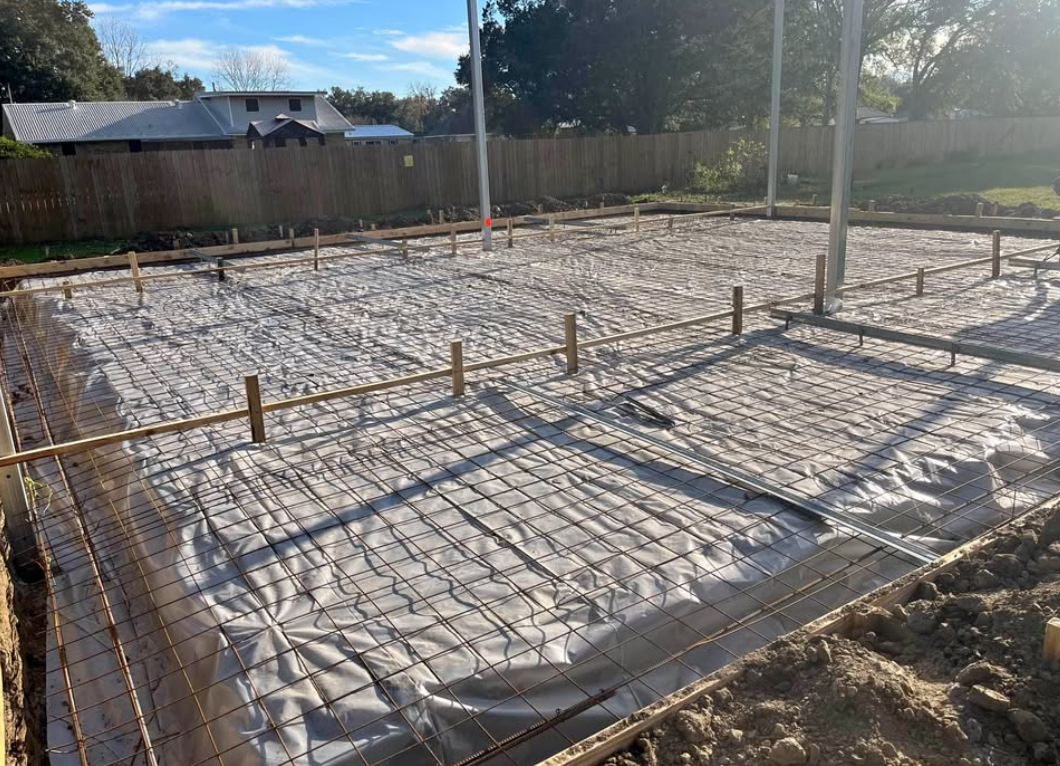Optimized Heavy Equipment Utilization and Resource Allocation Strategies
14 Lectura mínima
)
agosto 13, 2023
Efficient heavy equipment utilization and effective resource allocation are crucial for the success of any construction project. By optimizing equipment usage and allocating resources strategically, project managers can maximize productivity, reduce costs, and ensure timely completion. This article will delve into the intricacies of heavy equipment utilization and resource allocation, exploring the importance of equipment utilization, factors affecting it, measuring techniques, resource allocation strategies, and techniques for optimizing efficiency. Additionally, we'll discuss the challenges faced in equipment utilization and resource allocation, along with innovative solutions and future trends.
Understanding Heavy Equipment Utilization
Heavy equipment utilization refers to the extent to which equipment is effectively utilized on a construction site. Proper utilization ensures that equipment is working at its full potential, minimizing downtime and maximizing productivity. Effective utilization is essential for completing projects within deadlines and budget constraints.
When heavy equipment is utilized effectively, it not only improves productivity but also reduces costs. The efficient use of equipment helps to avoid unnecessary expenses and ensures that projects are completed on time. Additionally, it allows construction companies to allocate resources efficiently, making the most of their equipment inventory.
One of the key benefits of optimizing heavy equipment utilization is the reduction of downtime. Downtime occurs when equipment is not in use due to various reasons such as maintenance, repairs, or waiting for materials. By maximizing equipment utilization, construction companies can minimize downtime and keep projects running smoothly.
The Importance of Equipment Utilization
Equipment utilization directly impacts project cost, duration, and overall efficiency. When equipment is underutilized, it leads to increased project duration, unnecessary expenses, and reduced productivity. Conversely, overutilization can cause equipment breakdowns, excessive maintenance, and potential safety hazards. Optimal equipment utilization strikes a balance, optimizing productivity while minimizing costs.
Proper equipment utilization also plays a crucial role in maintaining a safe working environment. Overutilization of equipment can lead to fatigue and increased risk of accidents. By ensuring that equipment is utilized effectively, construction companies can prioritize safety and minimize the chances of workplace incidents.
Moreover, equipment utilization is closely linked to customer satisfaction. When projects are completed on time and within budget, clients are more likely to be satisfied with the construction company's performance. This can lead to positive reviews, referrals, and future business opportunities.
Factors Affecting Equipment Utilization
:format(webp))
Several factors influence equipment utilization, including project scope, size, complexity, and site conditions. Equipment availability and reliability, operator proficiency, and project scheduling also play significant roles. Additionally, environmental factors such as weather conditions and changing regulations can impact equipment utilization.
Project scope and size determine the type and quantity of equipment required. A larger project may require multiple pieces of heavy equipment to be utilized simultaneously, while a smaller project may only need a single machine. The complexity of the project also affects equipment utilization, as more intricate tasks may require specialized equipment.
Site conditions, such as terrain and accessibility, can also impact equipment utilization. Challenging terrain may require specific types of equipment or modifications to existing machinery. Additionally, environmental factors like extreme weather conditions can affect equipment performance and utilization.
Measuring Equipment Utilization Effectively
Accurately measuring equipment utilization is crucial for identifying areas of improvement, planning maintenance schedules, and optimizing resource allocation. Key performance indicators (KPIs) such as equipment downtime, utilization rate, and availability are effective tools for measuring utilization. Advanced technologies like telematics and equipment tracking systems provide real-time data for accurate measurement.
Equipment downtime refers to the time when equipment is not in operation due to maintenance, repairs, or other factors. By tracking downtime, construction companies can identify patterns and take proactive measures to minimize it. Utilization rate measures the percentage of time that equipment is actively utilized, providing insights into its efficiency.
Availability is another important KPI that measures the percentage of time equipment is available for use. By monitoring availability, construction companies can identify potential bottlenecks and make informed decisions regarding resource allocation. Telematics and equipment tracking systems provide real-time data on equipment utilization, allowing for accurate measurement and analysis.
In conclusion, understanding and optimizing heavy equipment utilization is crucial for construction companies. By effectively utilizing equipment, they can improve productivity, reduce costs, ensure safety, and enhance customer satisfaction. Monitoring and measuring equipment utilization through KPIs and advanced technologies enable companies to make data-driven decisions and continuously improve their operations.
Resource Allocation in Heavy Equipment Operations
Resource allocation involves assigning resources such as equipment, personnel, and materials to specific tasks or projects. In heavy equipment operations, resource allocation plays a vital role in ensuring efficient project execution and cost control.
When it comes to heavy equipment operations, resource allocation goes beyond simply assigning resources to tasks. It requires careful consideration of various factors to ensure smooth project execution and optimal resource utilization. Let's delve deeper into the role of resource allocation in heavy equipment operations.
The Role of Resource Allocation
Proper resource allocation ensures that equipment, operators, and materials are assigned appropriately to tasks, avoiding bottlenecks and delays. It involves analyzing project requirements, considering the availability of resources, and making informed decisions to allocate them effectively.
Effective resource allocation allows project managers to optimize resource utilization, minimize idle time, and enhance productivity. By allocating resources in a strategic manner, projects can be completed within the allocated time frame and budget, leading to increased client satisfaction.
Furthermore, resource allocation plays a crucial role in aligning available resources with project priorities and goals. It helps project managers prioritize tasks based on their importance and allocate the necessary resources accordingly. This ensures that critical tasks receive the required resources, resulting in successful project outcomes.
Types of Resources in Equipment Operations
In heavy equipment operations, resources include not only the equipment itself but also skilled operators, maintenance teams, spare parts, and materials. Each of these resources requires careful allocation and management to ensure smooth project execution.
When allocating resources, project managers must consider the specific requirements of each task. For example, certain tasks may require specialized equipment or highly skilled operators. By understanding the unique needs of each task, project managers can allocate the appropriate resources, ensuring efficient and effective project execution.
Scheduling and coordinating resource allocation are also essential in heavy equipment operations. With multiple tasks running simultaneously, project managers must carefully plan and schedule the allocation of resources to avoid conflicts and maximize productivity. By creating a comprehensive schedule, project managers can ensure that resources are allocated in a way that optimizes their utilization and minimizes downtime.
Strategies for Effective Resource Allocation
Adopting effective strategies for resource allocation is crucial for successful project management. Proper planning, considering project requirements and constraints, allows for a well-organized allocation of resources.
One strategy for effective resource allocation is to conduct a thorough analysis of project requirements and resource availability. By understanding the specific needs of the project and the resources at hand, project managers can make informed decisions about resource allocation. This analysis helps in identifying potential bottlenecks and allocating resources in a way that prevents delays and ensures smooth project execution.
Regular communication and coordination between project managers, supervisors, and operators are also vital for effective resource allocation. By maintaining open lines of communication, project managers can ensure that resources are available when needed and that any conflicts or issues are promptly addressed. This reduces downtime and prevents delays in project execution.
Additionally, leveraging technology, such as resource management software, can greatly enhance accuracy and efficiency in resource allocation. These software solutions provide real-time information on resource availability, allowing project managers to make informed decisions and quickly adapt to any changes or challenges that may arise during project execution.
In conclusion, resource allocation in heavy equipment operations is a critical aspect of successful project management. It involves assigning resources based on project requirements, optimizing resource utilization, and aligning available resources with project priorities and goals. By adopting effective strategies and leveraging technology, project managers can ensure efficient project execution, minimize downtime, and achieve cost control.
Strategies for Optimizing Heavy Equipment Utilization
To maximize heavy equipment utilization, certain strategies can significantly improve efficiency and productivity.
Heavy equipment is a valuable asset in industries such as construction, mining, and agriculture. However, without proper utilization, these expensive machines can become a burden on the bottom line. To ensure that heavy equipment operates at its full potential, it is essential to implement various strategies that focus on preventive maintenance, operator training, and leveraging technology.
Preventive Maintenance and Equipment Utilization
Implementing a proactive maintenance program ensures that equipment operates at its optimum capacity. Regular inspections, servicing, and preventive repairs help identify and address issues before they become major problems, reducing unplanned downtime and breakdowns. By conducting thorough maintenance checks, technicians can detect any signs of wear and tear, faulty components, or potential problems that may hinder equipment performance.
Moreover, an effective preventive maintenance program contributes to improved equipment utilization and longevity. By addressing minor issues promptly, heavy equipment can continue to operate efficiently, minimizing the risk of major breakdowns that can lead to costly repairs and downtime.
Training Operators for Optimal Utilization
The proficiency of equipment operators greatly influences equipment utilization. Providing comprehensive training programs enhances operator skills, enabling them to operate machinery efficiently, identify potential issues, and perform minor repairs. Well-trained operators not only understand the intricacies of the equipment but also know how to utilize its full potential.
During training, operators learn how to optimize fuel consumption, reduce idle time, and follow best practices for equipment operation. They become familiar with the equipment's capabilities and limitations, allowing them to make informed decisions that maximize productivity and minimize downtime. Additionally, trained operators are more likely to identify early signs of equipment malfunction, preventing potential breakdowns and costly repairs.
Leveraging Technology for Equipment Utilization
Technological advancements offer various tools to optimize heavy equipment utilization. Telematics systems provide real-time data on equipment performance, fuel consumption, and maintenance requirements, enabling proactive decision-making. By monitoring key performance indicators, such as engine hours, fuel efficiency, and idle time, managers can identify areas for improvement and take necessary actions to enhance equipment utilization.
Additionally, automated systems and remote monitoring assist in tracking equipment status, scheduling maintenance, and improving overall utilization. With the help of sensors and connectivity, managers can remotely access equipment data, receive alerts for potential issues, and even remotely diagnose problems. This allows for timely maintenance and repairs, reducing downtime and maximizing equipment availability.
Furthermore, technology can aid in optimizing equipment utilization through advanced analytics and predictive maintenance. By analyzing historical data and patterns, managers can identify potential breakdowns or inefficiencies before they occur. This proactive approach enables timely interventions, preventing unplanned downtime and ensuring continuous equipment utilization.
By implementing preventive maintenance programs, providing comprehensive operator training, and leveraging technology, heavy equipment utilization can be optimized. These strategies not only increase efficiency and productivity but also contribute to cost savings and improved profitability in industries that heavily rely on heavy equipment.
Resource Allocation Techniques for Improved Efficiency
Adopting resource allocation techniques enhances efficiency and streamlines project execution. Efficient resource allocation is closely tied to effective project management, allowing for better alignment and control. Planning resource allocation in conjunction with project milestones and deliverables ensures project milestones are met and enables project managers to optimize utilization and achieve timely completion. Regular monitoring and evaluation contribute to enhanced efficiency by identifying potential resource constraints and making adjustments to optimize utilization.
Prioritizing Resource Allocation
Identifying critical tasks and allocating resources accordingly ensures project milestones are met. By prioritizing high-value tasks and allocating resources accordingly, project managers can optimize utilization and achieve timely completion. Regular evaluation and adjustment of resource allocation based on project progress contribute to enhanced efficiency.
For example, in a software development project, the project manager may prioritize the allocation of resources to tasks that are critical for the completion of the project's minimum viable product (MVP). By focusing on these tasks, the project manager ensures that the core functionality of the software is developed first, allowing for early feedback and validation from stakeholders. This approach not only improves efficiency but also reduces the risk of delays or rework later in the project.
Furthermore, prioritizing resource allocation allows project managers to allocate resources strategically based on the availability and expertise of team members. By matching the right resources to the right tasks, project managers can maximize productivity and minimize the need for unnecessary handovers or reassignments.
Resource Allocation and Project Management
Efficient resource allocation is closely tied to effective project management. Planning resource allocation in conjunction with project milestones and deliverables allows for better alignment and control. Regular monitoring and evaluation enable project managers to identify potential resource constraints and make adjustments to optimize utilization.
Project managers can utilize various techniques and tools to facilitate resource allocation and project management. For instance, they can employ resource management software that provides real-time visibility into resource availability, allowing for effective allocation and tracking. Additionally, project managers can leverage project management methodologies such as Agile or Scrum, which emphasize iterative planning and continuous resource allocation based on changing project requirements and priorities.
By integrating resource allocation into the overall project management process, project managers can ensure that resources are allocated efficiently and effectively throughout the project lifecycle. This approach not only improves efficiency but also enhances project outcomes and stakeholder satisfaction.
Case Study: Successful Resource Allocation in Heavy Equipment Operations
Examining successful resource allocation strategies in real-world scenarios provides valuable insights. This case study highlights a project where meticulous resource allocation resulted in reduced project duration, increased productivity, and cost savings. By analyzing this case study, valuable lessons can be learned and applied to future projects.
In the case study, a construction company successfully allocated resources for a large-scale infrastructure project involving heavy equipment operations. The project manager carefully assessed the project requirements and allocated resources based on the specific needs of each phase. This involved assigning skilled operators to operate heavy machinery, coordinating material deliveries to ensure timely availability, and strategically scheduling maintenance and repairs to minimize downtime.
As a result of the meticulous resource allocation, the project was completed ahead of schedule, saving both time and costs. The optimized utilization of resources ensured that heavy equipment was utilized efficiently, reducing idle time and maximizing productivity. The project manager's proactive approach to resource allocation also minimized the risk of equipment breakdowns and delays, leading to smooth and uninterrupted project execution.
By studying this case study, project managers can gain insights into the importance of thorough planning and strategic resource allocation. They can learn how to assess project requirements, identify critical tasks, and allocate resources accordingly to optimize efficiency and achieve project success.
Challenges and Solutions in Equipment Utilization and Resource Allocation
Despite the potential benefits, equipment utilization and resource allocation are not without challenges. Understanding these challenges and implementing innovative solutions is crucial for improved efficiency.
Common Challenges in Equipment Utilization and Resource Allocation
Challenges such as equipment breakdowns, operator shortages, unexpected delays, and changing project requirements are common in heavy equipment operations. Inefficient communication, lack of visibility, and poor coordination among teams can further complicate resource allocation. Identifying and addressing these challenges proactively is essential for successful project management.
Innovative Solutions for Resource Allocation
New technologies, such as artificial intelligence, machine learning, and predictive analytics, offer innovative solutions for resource allocation challenges. Advanced planning tools and software enable real-time tracking, automated resource allocation, and data-driven decision-making. Additionally, collaborative platforms and improved communication systems enhance coordination among stakeholders, enabling efficient resource allocation.
Future Trends in Equipment Utilization and Resource Allocation
The construction industry is continuously evolving, and equipment utilization and resource allocation are not exempt from technological advancements. Future trends include the integration of Internet of Things (IoT) devices, increased automation, and predictive maintenance. Advancements in data analysis and artificial intelligence will further optimize resource allocation, enhance equipment utilization, and improve overall project performance.
In conclusion, heavy equipment utilization and resource allocation are critical elements in successful construction project management. Understanding the importance of equipment utilization, measuring effectively, and adopting strategies for optimization contribute to enhanced productivity and cost control. Proper resource allocation, supported by effective techniques and innovative solutions, ensures smooth project execution and efficient resource utilization. As the construction industry continues to evolve, embracing future trends will enable better utilization and allocation of resources, paving the way for improved project outcomes.

Caleb Woods is an experienced content specialist and an editor at Boom & Bucket, blending his journalism background with expertise in the heavy equipment industry. He delivers engaging, informative content to help professionals stay informed and make smarter decisions in the machinery market.














